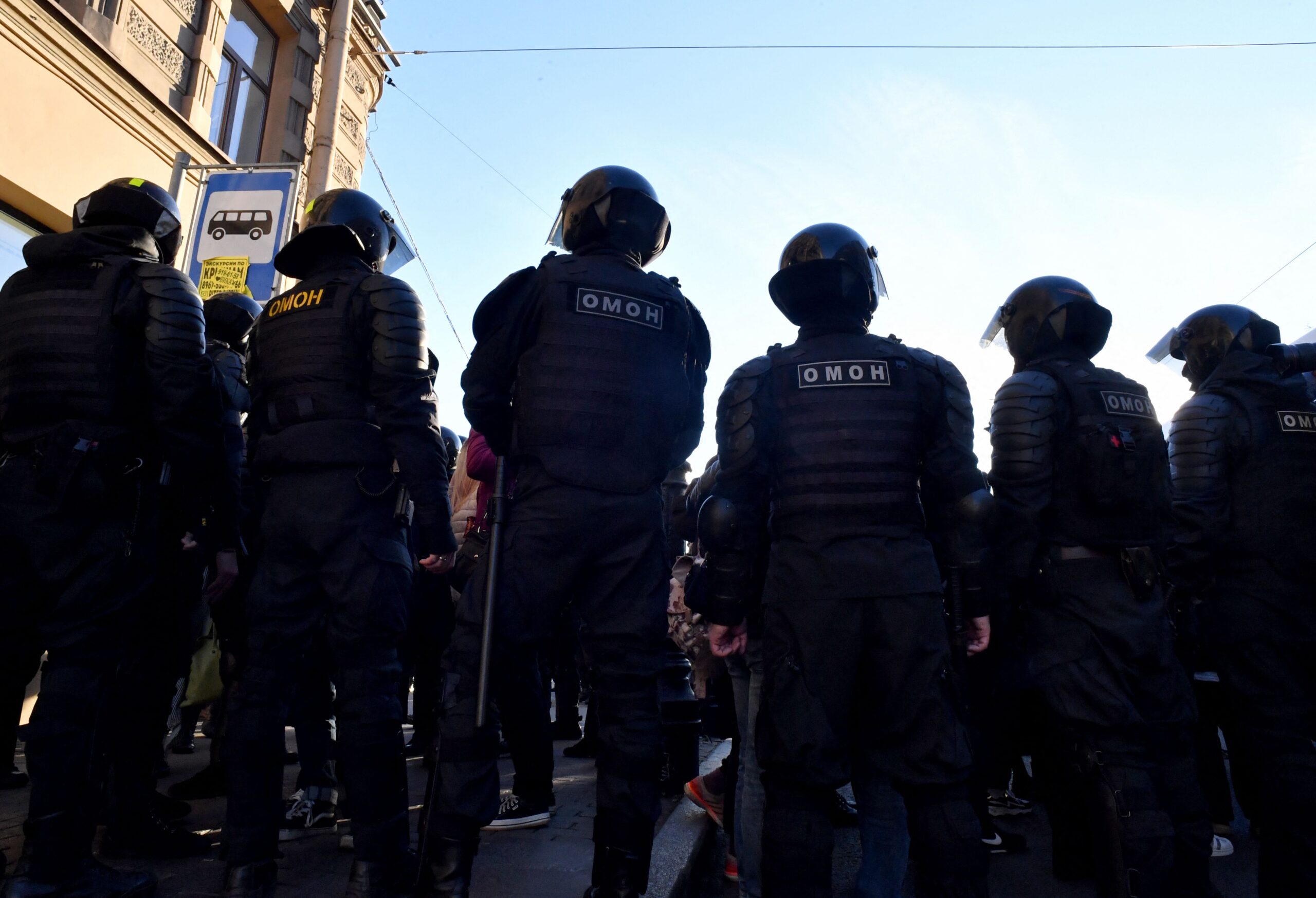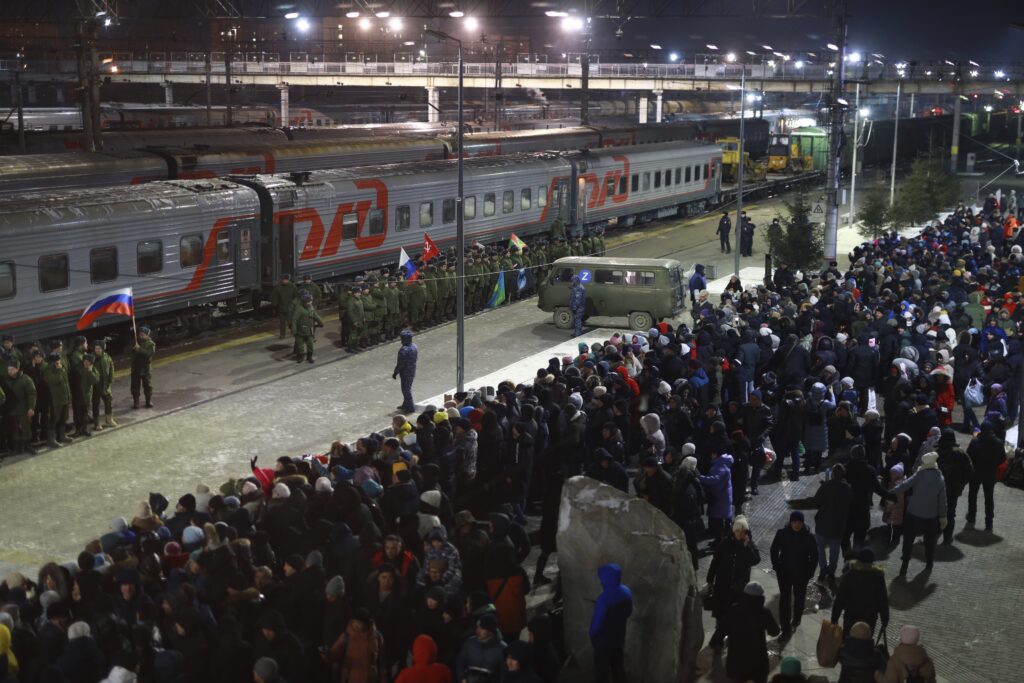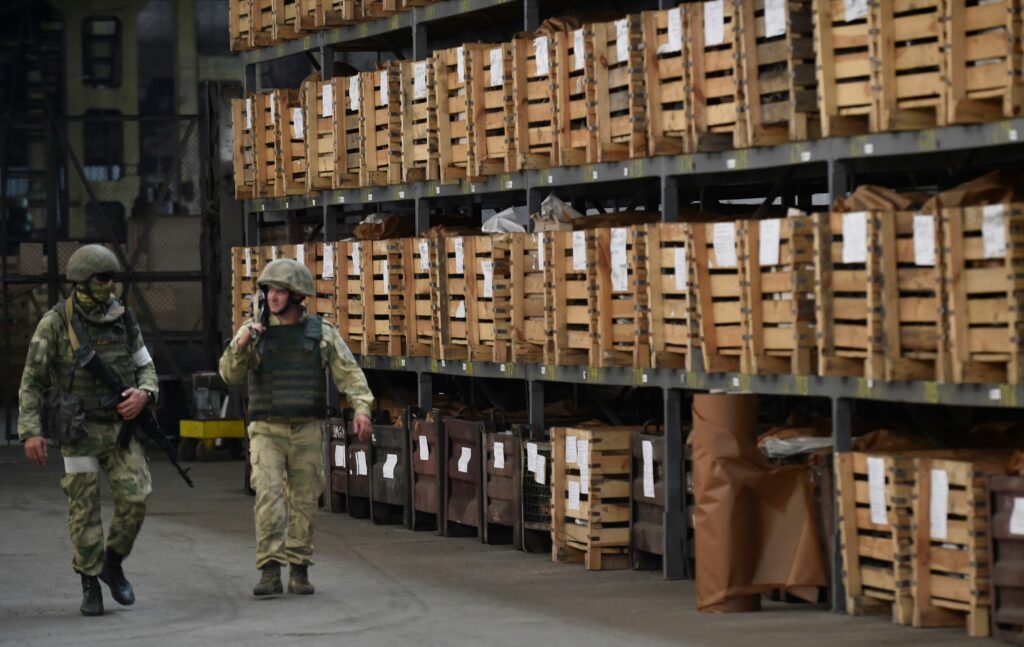Russia’s ‘partial’ mobilization has instantly changed the atmosphere in the country, sparking nationwide anti-conscription protests. Unlike previous nationwide protest movements, the North Caucasus has been at the forefront of criticising the Putin regime.
This is no coincidence; the region has already been one of the hardest hit by casualties in Ukraine. On top of that, protestors here may have been emboldened by the refusal of some Rosgvardia troops from Kabardino-Balkaria and North Ossetia to deploy to Ukraine. Put succinctly, the region has felt the harsh cost of Vladimir Putin’s invasion.
That said, the current protest wave against mobilization is more than just not wanting to fight Putin’s war, it is resisting a perceived existential threat. Many in the region are aware that their men are being served up as cannon fodder, that they will not return. In a region where the anniversaries of past genocides are annually marked with large gatherings, the potential for sustained protest is considerable. In response, the authorities of each North Caucasus republic have faced down public opposition in different ways, but with limited effectiveness.
Dagestan
It has been reported that Governor Sergei Melikov instructed his military commissars to conscript 13,000 men or be sent to the front themselves. The commissars have endeavored to fulfill this order. The authorities are grabbing men off the streets and issuing conscription summonses at bus stations, by knocking on doors, and even by setting off car alarms to lure men out of their apartments. The commissar for Kizilyurt claimed he could potentially conscript 12,000 men in his district.
This objective, and the methods being used to achieve it, have created an atmosphere of fear in Dagestan. Yet in defiance, the populace is rising up.
The first major protest occurred in the rural, Kumyk town of Babayurt, located along the federal highway running north out of Makhachkala. This highway played a central role, as residents shut down the thoroughfare in protest of the mobilization. In another viral video from Babayurt, a woman angrily confronts an enlistment officer, with fellow residents supporting her. Three days later, the residents of Endirei, another Kumyk village, closed the Makhachkala-Khasavyurt highway for several hours. The military commissars in both Babayurt and Endirei are ethnic Avars, playing into local tensions.
Hours after Endirei’s residents shut down the highway, Makhachkala’s opponents of mobilization flocked downtown to protest. The event was marked by women chanting «no war,» brawls between police and protesters, and harsh arrests. The police were only able to disperse the protest when Rosgvardia troops eventually arrived.
Opposition to mobilization has been fierce online here too. A set of protest posters were created for social media, labeling Putin and Melikov as «devils,» evoking the spirit of the 19th century Dagestani resistance hero Imam Shamil, orlikening the mobilization to General Aleksei Yermolov (who fought for the Tsar against Shamil in Dagestan). Dagestani social media users called for participation in the invasion to be voluntary —and for the children of officials and deputies to be drafted first.
In response, Melikov has doubled-down on his position, supporting a Babayurt enlistment officer who was confronted by residents and calling the Makhachkala protest an «evil» organized from abroad. In a bid to counter a lack of pro-mobilization sentiments, Melikov’s administration is preying upon Dagestani masculinity and Islamic piety, having the deputy mufti of Dagestan promise that anyone who dies in Ukraine will become a «shahid» (martyr).
Chechnya
In Chechnya, the mobilization was forecast by Ramzan Kadyrov’s statements the week prior. Sensing the imminence of their sons’ mobilization, Chechen mothers posted messages on social media, pleading with Kadyrov for their sons not to be sent to die in Ukraine.
These sentiments culminated on September 21, when a group of mothers protested against mobilization on Grozny’s central square. Retaliation was immediate; the protesters’ sons were conscripted by the end of the day. After the protest, one woman sang the Ichkerian national anthem in Grozny’s Berkat Market. The kadyrovtsy later found her and forced her relatives to say she is mentally ill.
On the same day as the mothers’ protest in Grozny, flyers were posted in Tsentaroi, Kadyrov’s native village. They were a call for the population to prepare themselves, and specifically mentioned the «Sons of Ichkeria,» a newly formed underground militant group. The messages warned Kadyrov that «it all began here; it all ends here.» While the feasibility of «ending it» for Kadyrov is dubious, posting these flyers in his home village is certainly brazen. All of these acts of protest indicate how some Chechens are done living in total fear.
Kadyrov’s efforts in the wake of resistance to mobilization has been to move it out of the public sphere. He announced that mobilization was cancelled, allegedly because the republic had fulfilled 254 percent of its quota. Following this proclamation, the kadyrovtsy began to work more silently, without the ostentatious, patriotic assemblies beloved by Kadyrov. This silent mobilization has consisted primarily of three tactics. First, his security services began checking cars from Chechnya at the Astrakhan border-crossing into Kazakhstan. Second, they have abducted men from Federal Migration Service offices when they go to obtain international passports. Finally, the kadyrovtsy take advantage of road accidents, such as in this anecdote of an injured man being grabbed while driving to Shali. This strategy allows the mobilization to operate more under-the-radar.
Kabardino-Balkaria
Mobilization has proceeded smoothly from the outset in rural parts of Kabardino-Balkaria. In the urban centers, Nalchik and Baksan, it has done anything but that.
Kabardino-Balkaria’s hotspot has been Baksan, the republic’s third largest town. On September 22, fifty men refused their summonses, leading to a protest on the square outside the commissariat and a confrontation at a meeting in the administrative building over bias in the mobilization. A protest on September 25 in Nalchik was organized by Ibragim Yaganov, a veteran Circassian activist. Yaganov had previously addressed Circassians, saying that «this is not our war.»
In response to the protests, the republican authorities banned potential conscripts from leaving the region. Governor Kazbek Kokov visited Baksan District to meet with residents. In the informational space, pro-regime Telegram accounts claim that Yaganov is enacting the United States’ plan, the sinister goal of which is left up to the reader to decide. Police are also targeting bloggers with anti-mobilization positions.
Ingushetia, North Ossetia, and Karachay-Cherkessia
From the remaining republics, there has been a dearth of information concerning public reactions to mobilization. Almost nothing has emerged out of Ingushetia, as the organized opposition was largely suppressed in the past year. One of the only messages is from a Kremlin-aligned channel warning residents not to protest.
Information concerning North Ossetia has been more difficult to obtain because of its delayed mobilization and because it hosts the border-crossing into Georgia, which obscures public sentiments with the influx of outsiders trying to flee. One video was posted of a mother crying while following a troop transport. North Ossetian authorities, like their counterparts in Dagestan, are utilizing peer pressure, masculinity, and cowardice to secure conscripts.
Most information about mobilization in Karachay-Cherkessia comes from pro-Kremlin channels. However, the opposition is attempting to increase protest sentiments in the republic, aided by the Chechen and Dagestani opposition.
Losing control?
The authorities’ grip appears to be slipping. The chance of sustained protests is high, and there are increasing indications that they will transform into something else.
The likelihood of protests continues in Dagestan and Kabardino-Balkaria. Dagestani opposition channels are threatening to shut down all federal highways in the public. This is the second protest by Chechen women within the past year, indicating how the republic’s internal dynamics are shifting. Keeping the protest narratives about the existential threat posed by mobilization and Russia’s war not belonging to the Caucasus creates additional danger to the authorities in two ways. The first narrative positions local, regional, and federal authorities as a threat to the people, stoking anti-government sentiment. The second narrative conceptually separates the Caucasus from Russia. Already, some factions of the Dagestani opposition are promoting the idea of «free Dagestan.»
Situating these protests into the national and regional contexts shows an increasing chance of violence. «Rospartizans,» the group behind acts of sabotage across Russia, called on Dagestanis to launch a partisan warfare campaign, even providing them a list of targets. Starting this type of conflict in Dagestan would essentially operate as an insurgency’s opening salvo, eliminating logistical, personnel, and command centers. One popular Telegram channel, «Utro Dagestan,» has already announced the creation of one partisan group. Since the harsh tactics of the security services in the North Caucasus has hastened youth radicalization in recent years, it is very conceivable that more will answer the call.
Starting a campaign of decentralized violence does not mean it will stay loosely organized. There are currently attempts to reignite the underground insurgency, first in Chechnya, Dagestan, and Ingushetia, then throughout the entire region. It is logical that small partisan groups would be targeted by would-be insurgents to turn into militant jamaats, based on their shared targets. Radicalized youth are also likely to join.
Alas, threats of violence have already begun to emerge. On September 24, a pair of bomb threats were made in Chechnya in Dagestan, seemingly by the same actor, referencing the terrorist attack on Budyonnovsk and Ramzan Akhmadov’s Urus-Martan jamaat, which was part of the Islamic Brigade in the Second Chechen War. While it remains unknown who made these threats, they seem to forebode the current trajectory of state-resistance dynamics in the North Caucasus if the war continues to apply pressure on the region.










